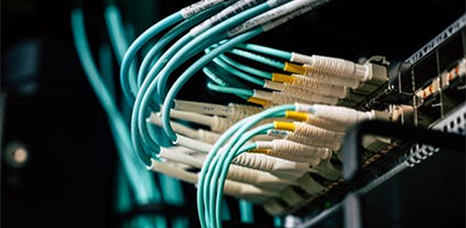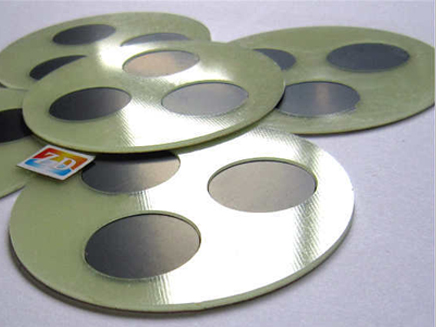Basic knowledge of wire and cable
Overview of wire and cable manufacturing process
The manufacturing of wires and cables is completely different from the production of most electromechanical products. Electromechanical products usually adopt the assembly of other parts into parts, and the assembly of multiple parts into a single product, and the products are measured by the number of units or pieces. Wire and cable are based on length as the basic unit of measurement. All wires and cables start from the processing of conductors, adding insulation, shielding, cabling, and sheathing layer by layer to the periphery of the conductor to make wire and cable products. The more complex the product structure, the more layers of overlap.
1. Process characteristics of wire and cable product manufacturing:
1. Large-length continuous stacking combined production method
The large-length continuous stacking combined production method has a global and controllable impact on the production of wires and cables, which involves and affects:
(1) Production process and equipment layout
Various equipment in the production workshop must be reasonably discharged according to the technological process required by the product, so that the semi-finished products in each stage can be circulated in sequence. The equipment configuration should consider the different production efficiency and balance the production capacity. Some equipment may have to be equipped with two or more units in order to balance the production capacity of the production line. Therefore, the reasonable combination of equipment and the layout of the production site must be balanced and comprehensively considered according to the product and production volume.
(2) Production organization management The production organization management must be scientific, reasonable, thorough, accurate, strict and meticulous. The operator must meticulously implement the process requirements. Any problem in any link will affect the smoothness of the process and affect the quality and delivery of the product. Especially for multi-core cables, if the length of a certain pair or basic unit is short, or there is a quality problem, the entire cable will be insufficient in length, resulting in scrap. Conversely, if the length of a certain unit is too long, it must be sawn to cause waste.
(3) Quality management The production method of continuous stacking and combination of large lengths will affect the quality of the entire cable if a little problem occurs in any link in the production process. The more quality defects occur in the inner layer, and the production is not terminated in time, the greater the loss will be. Because the production of wires and cables is different from assembled products, they can be disassembled, reassembled and replaced; quality problems in any part of the wire and cable or the process are almost irreparable and make up for this cable. The post-event treatment is very negative, either cutting short or downgrading, or scrapping the entire cable. It cannot be disassembled and reinstalled. The quality management of wires and cables must run through the entire production process. The quality management inspection department shall conduct roving inspections of the entire production process, self-inspection of operators, and mutual inspection of upper and lower procedures. This is an important guarantee and means to ensure product quality and improve the economic efficiency of the enterprise.
2. There are many types of production processes and large material flow
Wire and cable manufacturing involves a wide range of processes, from smelting and pressure processing of non-ferrous metals, to chemical technologies such as plastics, rubber, and paint; textile technologies such as wrapping and weaving of fiber materials, to wrapping and metal strips of metal materials Longitudinal package, welding metal forming processing technology and so on.
Various materials used in wire and cable manufacturing not only have many types, varieties, and specifications, but also a large number. Therefore, the amount of various materials, spare amount, batch period and batch must be approved. At the same time, the decomposition, recycling, reuse, and waste disposal of waste products are an important part of management, and we should do a good job in material quota management and pay attention to conservation.
In the production of wires and cables, from the entry and exit of raw materials and various auxiliary materials, the flow of semi-finished products in each process to the storage and delivery of products, the material flow is large, and reasonable layout and dynamic management are necessary.
3. Many dedicated equipment
Wire and cable manufacturing uses special production equipment with the characteristics of the industry to adapt to the structure and performance requirements of cable products, and to meet the requirements of large-length continuous and as high-speed production as possible, thus forming a special equipment series for cable manufacturing. Such as extruder series, wire drawing machine series, stranding machine series, wrapping machine series, etc.
The manufacturing process of wire and cable is closely related to the development of special equipment and promotes each other. New process requirements promote the production and development of new special equipment; in turn, the development of new special equipment has promoted the promotion and application of new processes. Such as wire drawing, annealing, extrusion tandem lines; physical foaming production lines and other special equipment, promote the development and improvement of wire and cable manufacturing processes, and improve the product quality and production efficiency of cables.
Second, the main process of wire and cable
Wires and cables are made through three processes: drawing, stranding, and coating. The more complex the model and specification, the higher the repeatability.
1. Draw
In metal pressure processing. Under the action of external force, the metal is forced through the mold (press wheel), the cross-sectional area of the metal is compressed, and the technical processing method to obtain the required cross-sectional area shape and size is called metal drawing.
The drawing process is divided into: monofilament drawing and twisting drawing.
2. Stranded
In order to improve the flexibility and integrity of the wire and cable, two or more single wires are intertwined in a prescribed direction, which is called twisting. The stranding process is divided into: conductor stranding, cable formation, braiding, steel wire armoring and winding.
3. Cladding
According to the different performance requirements of the wire and cable, special equipment is used to coat different materials on the outside of the conductor. Coating process points:
A. Extrusion: rubber, plastic, lead, aluminum and other materials.
B. Longitudinal package: rubber, corrugated aluminum tape material.
C. Winding: ribbon-shaped paper tape, mica tape, alkali-free glass fiber tape, non-woven fabric, plastic tape, etc., linear cotton yarn, silk and other fiber materials.
D. Dip coating: insulating paint, asphalt, etc.
Third, the basic process flow of plastic wire and cable manufacturing
1. Copper and aluminum monofilament drawing
Commonly used copper and aluminum rods for wires and cables, at room temperature, use a wire drawing machine to pass through one or several stretch die holes to reduce the cross-section, increase the length, and increase the strength. Wire drawing is the first process of various wire and cable companies, and the main process parameter of wire drawing is die matching technology.
2. Monofilament annealing
Copper and aluminum monofilaments are heated to a certain temperature to recrystallize the toughness of the monofilament and reduce the strength of the monofilament to meet the requirements of the wire and cable for the conductive core. The key to the annealing process is to prevent the oxidation of the copper wire.
3. Stranding of conductors
In order to improve the flexibility of the wire and cable and facilitate the laying and installation, the conductive core is made of multiple monofilaments twisted. From the stranding form of the conductive core, it can be divided into regular stranding and irregular stranding. Irregular stranding is divided into bundle stranding, concentric twisting, special stranding and so on.
In order to reduce the occupied area of the wire and reduce the geometric size of the cable, the compacted form is adopted while the conductor is twisted, so that the ordinary circle is transformed into a semicircle, a sector, a tile shape and a compacted circle. This kind of conductor is mainly used in power cables.
4. Insulation extrusion
Plastic wire and cable mainly use extruded solid insulation layer. The main technical requirements for plastic insulation extrusion:
4.1. Eccentricity: The deviation value of the extruded insulation thickness is an important indicator of the level of the extrusion process. Most of the product structure dimensions and deviation values are clearly specified in the standard.
4.2. Smoothness: The surface of the extruded insulation layer must be smooth, and there must be no poor quality problems such as surface roughness, burnt, and impurities
4.3. Density: The cross-section of the extruded insulation layer should be dense and strong, and no pinholes visible to the naked eye are allowed to prevent the existence of air bubbles.
5. Cable
For a multi-core cable, in order to ensure the degree of forming and reduce the shape of the cable, it is generally necessary to twist it into a circle. The stranding mechanism is similar to that of conductor stranding. Because the stranding pitch diameter is larger, most of the twist-free methods are used. Technical requirements for cable formation: First, to prevent twisting of the cable caused by the overturning of the special-shaped insulated core; second, to prevent the insulation layer from being scratched.
Most of the cables are completed with the completion of the other two processes at the same time: one is filling to ensure the roundness and stability of the cable after the cable is formed; the other is binding to ensure that the cable core is not loose.
6. Inner sheath
In order to protect the insulated core from being damaged by the armor, the insulating layer needs to be properly protected. The inner protective layer is divided into: extruded inner protective layer (isolation sleeve) and wrapped inner protective layer (cushion layer). The wrapping cushion layer replaces the lashing tape and the cable forming process is carried out simultaneously.
7. Armor
For cables laid underground, they may be subjected to certain positive pressure during work, and an inner steel tape armored structure can be selected. Cable laying in occasions with both positive pressure and tension (such as in water, vertical shafts or soil with a large drop), the structural type with inner steel wire armor should be selected.
8. Outer sheath
The outer sheath is the structural part that protects the insulating layer of the wire and cable from environmental factors. The main function of the outer sheath is to improve the mechanical strength of the wire and cable, prevent chemical corrosion, moisture, waterproof, and prevent the cable from burning. According to the different requirements of the cable, use the extruder to directly extrude the plastic sheath (information comes from the Internet)
recommended article
-
2024 Women's Day, the company's female compatriots received special care and gifts!
-
The USB 4 Type C cable of Hibest Electronic Co.Ltd has recently passed the latest "USB Type-c Connectors and Cable Assemblies Compliance Document Revision 2.0" standard certification published by USB-IF Association. The formal TID NO: 6920 was published on the USB IF website under Integrator List, which make Hibest to be a certified manufacturer of USB4™ Gen3 40Gbps. Hibest will follow the needs of market as always and take the latest technology orientation as a core. We will continue to invest in research and development and innovation of technology and strive to renovate traditional manufacturing techniques and then gradually to make Chinese manufacturing to be smarter....
-
Before welding, the aluminum foil Mylar needs to be peeled off by laser. If there are still various impurities and pollutants on the aluminum foil, it will seriously affect the subsequent welding of metal parts such as terminals, copper sheets and the aluminum foil, and ultimately affect the accuracy and performance of the product test. efficient…… Part 1 The composition of high-speed cables High-speed cable (Direct Attach Cable) is abbreviated as DAC (common DAC high-speed cable classification and model), generally translated as direct connection cable or direct connection copper cable, using silver-plated copper conductor and foamed insulated core wire as the material, using a separate wire The way of shielding and total shielding constitutes a high-speed cable. The cable composition structure is mainly divided into four layers: DAC level one C...









